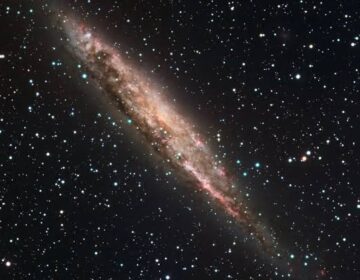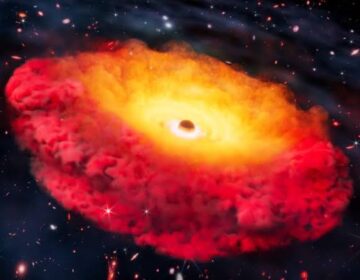Astronomers have confirmed the existence of a rare, retrograde-orbiting planet in a tight binary star system.
Most stars throughout the Universe are part of binary or multiple star systems.
A nearby companion star can make it difficult for planets to form and remain in stable orbits around just one of the stars.
A research team made up of international astrophysicists, led by Professor Man Hoi Lee from the University of Hong Kong’s Department of Earth Sciences and Department of Physics, along with MPhil student Ho Wan Cheng, has confirmed a highly unusual planetary discovery.
They identified a planet orbiting in the opposite direction of its binary stars’ movement, known as a retrograde orbit, within the nu Octantis binary system.
Their work also sheds light on how the evolution of binary stars may have influenced the planet’s origin. These results have been published in the journal Nature.
The nu Octantis system contains two closely bound stars.
The primary star, nu Oct A, is a subgiant with approximately 1.6 times the mass of the Sun.
Its companion, nu Oct B, has roughly half the Sun’s mass. Together, the two stars complete an orbit around each other every 1,050 days.
Evidence for a potential planet in this system first emerged in 2004, when Dr David Ramm now a co-author of the recent study—was conducting his PhD research at the University of Canterbury in New Zealand.
He detected an unusual pattern in the radial velocity data (which tracks a star’s motion toward or away from Earth), suggesting the presence of a planet.







